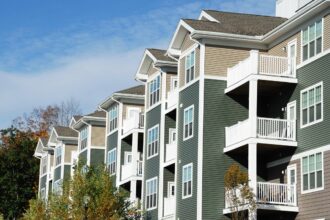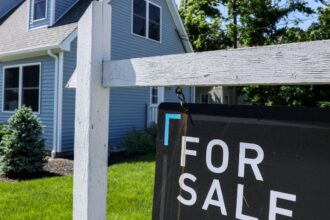The numbers: Home sales fell in December to the lowest level in more than a decade as demand continued to exceed the supply of listings for sale, pushing prices up to close out the year.
Sales activity on a monthly basis was at the lowest level since August 2010.
Sales of previously owned homes fell by 1% to an annual rate of 3.78 million in December, the National Association of Realtors said Friday.
That’s the number of homes that would be sold over an entire year if sales took place at the same rate in every month as in December. The numbers are seasonally adjusted.
The increase in sales fell short of expectations on Wall Street, which was expecting a 3.83 million pace for December.
Compared with December 2022, home sales are down by 6.2%.
Looking at 2023 overall, sales dropped by nearly 19% from the previous year, falling to the lowest level since 1995, the NAR said, and the median home price reached a record high.
Key details: The median price for an existing home in December rose by 4.4% to $382,600, as compared with the year before.
Prices are still down from a peak in June 2022, when the median price of a resale home hit $413,800.
Looking at 2023 on an annual basis, the median price of a home reached a record high, the NAR noted, of $389,800. In 1995, the last time sales were as low, the median home price was $114,600.
The total number of homes for sale in December rose 4.2% from last year, to 1 million units.
Homes listed for sale remained on the market for 29 days on average, up from the previous month.
Sales of existing homes were mixed across the nation. Sales rose the most in the West, by 7.8%. The median price of a home in that region was $582,000.
All-cash buyers made up 29% of sales. The share of individual investors or second-home buyers was 16%. About 29% of homes were sold to first-time home buyers.
Big picture: The U.S. housing market is in a state of flux.
Falling mortgage rates are drawing buyers back in, but without a meaningful increase in the number of homes for sale, that’s going to keep a lid on home sales.
That demand-and-supply imbalance could push home prices up further, as more buyers converge on the same properties.
What the realtors said: “The latest month’s sales look to be the bottom before inevitably turning higher in the new year,” Lawrence Yun, chief economist at the NAR, told reporters. “Mortgage rates are meaningfully lower compared to just two months ago, and more inventory is expected to appear on the market in upcoming months.”
What are they saying? “We expect mortgage rates to drop back from 6.8% currently, to 6.25% by the end of the year. In our view, that modest fall won’t be enough to unwind mortgage rate ‘lock-in’ and bring a great deal more stock onto the market,” Thomas Ryan, a property economist at Capital Economics, wrote in a note.
“It is not clear to me that 30-year mortgage rates in the mid-6%’s will be enough to convince homeowners who are sitting with 3% and 4% mortgages to put their homes on the market and move,” Stephen Stanley, chief U.S. economist with Santander U.S. Capital Markets, wrote in a note.
So “the bad news is that home affordability is not likely to improve for potential homebuyers, so those looking to buy a home should make an offer before the spring home buying season starts,” Selma Hepp, chief economist at CoreLogic, said in a statement.
Market reaction: Stocks
DJIA
SPX
were up in early trading on Friday. The yield on the 10-year note
BX:TMUBMUSD10Y
was over 4.15%.
Read the full article here










